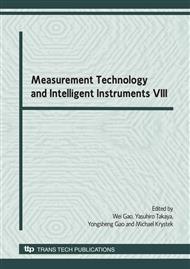p.337
p.343
p.345
p.349
p.353
p.357
p.361
p.365
p.369
Study on the Intravenous Lung Assist Device (ILAD) Using PZT Actuators and PVDF Sensors
Abstract:
The purpose of this study was to investigate the effect of vibration device in gas transfer rate for usage as intravenous lung assist device. Specific attention was focused on the effect of membrane vibration. Quantitative experimental measurements were performed to evaluate the performance of the device, and to identify membrane vibration dependence on hemolysis. Scaling analysis was then used to infer the dimensionless groups that correlate the performance of a vibrated hollow tube membrane oxygenator. The experimental design and procedure are then given for a device for assessing the effectiveness of membrane vibrations. This ILAD is used to provide some insight into how wall vibrations might enhance the performance of an intravascular lung assist device. The time and the frequency response of PVDF sensor were investigated through various frequencies in the ILAD. In these devices, the flow of blood and the source of oxygen were separated by a semipermeable membrane allows oxygen to diffuse into and out of the f1uid, respectively. The results of experiments have shown vibrating ILAD performs effectively.
Info:
Periodical:
Pages:
353-356
Citation:
Online since:
June 2008
Keywords:
Price:
Сopyright:
© 2008 Trans Tech Publications Ltd. All Rights Reserved
Share:
Citation:


